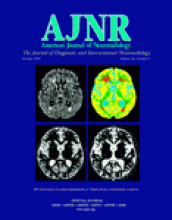Ever since the early development of in vivo MR, spectroscopy (MR spectroscopy) has been looked upon as the next great development for diagnostic imaging. The report by Cohen et al in this issue of AJNR demonstrates why this expression still applies today, since it illustrates that these measurements can indeed detect subtle changes in tissues that are not otherwise observable by any other imaging method, and yet we still need easier and more robust implementations of these techniques before they can become more widely used. Cohen and colleagues have demonstrated that N-acetylaspartate (NAA), long recognized to be an indicator of neuronal density and viability, is significantly reduced in patients with glial neoplasms, by an amount that greatly exceeds that which can be attributed to the tumor volume. It is hypothesized that this loss is due a combination of widespread and diffuse tumor-cell infiltration and a reduction of neuronal NAA due to the pathologic consequences of the disease process. The authors also suggest that a simple proton MR spectroscopy measurement of the average whole-brain NAA concentration indicates the degree of malignancy and could guide management decisions.
Several studies have indicated that MR spectroscopy can detect changes of brain metabolites, including reduced NAA, in tissues outside of the contrast-enhancing tumor boundary, and for this reason they have advocated use of MR metabolic imaging methods as part of the treatment planning procedures (1); however, these previously observed metabolic changes were still within 2 or 3 cm of the contrast-enhancing lesion volume. The remarkable finding of an average 26% loss of NAA throughout the brain in this group of subjects would indicate that, in fact, the effect is even more widespread. The available studies clearly do not indicate that, on average, almost a third of the brain is devoid of neurons; therefore, the interpretation must favor a more modest reduction of NAA throughout a larger volume of the brain, likely with a concentration gradient as a function of distance from the tumor that rapidly falls below the detection threshold of the previous spatially resolved MR spectroscopy measurements. This finding, however, should be kept in mind for analysis methods that make use of information from an apparently normal-appearing region of the same subject data to act as a signal intensity reference (1, 2).
Single-voxel proton MR spectroscopy measurement methods are implemented on commercial instruments in a convenient and largely automated manner, and diagnostic evaluation of suspected neoplasms represents perhaps the most widely used clinical application of these methods. These techniques, however, still have limitations, including that only a small volume of tissue is sampled and that additional training is required to interpret the MR spectroscopy results. The study presented in this report uses an even simpler spectroscopic measurement and analysis. The data are obtained from the whole brain, without even attempting to limit the spatial origins of the acquired signal, and then analyzed to give a single number that represents the average MR-observed whole-brain NAA concentration, which considerably simplifies the subsequent interpretation; however, though the technique is easy to implement, difficulties remain. First, the spatial origins of the signal intensity are affected by local magnetic field inhomogeneities throughout the brain, potentially making the results subject to operator and instrument-dependent variables, as well as the shape of the subject’s head and heterogeneity of the tumor. The quality of the resultant spectrum is something most spectroscopists would reject, because the underlying baseline and the metabolite resonance line shape cannot be reliably characterized, making quantitation highly variable. Second, to assess the significance of even this single metabolite concentration value, considerable effort is required to obtain the comparison (normal) data, and parameters such as the subject age must be taken into account. Finally, the signal intensity calibration requires that an additional measurement be taken and that some additional user-initiated image processing take place, which indicates that quality-control issues then become important. Despite these limitations, however, the results demonstrate that in the hands of expert researchers these measurements can be performed with sufficient reliability.
The ability of MR spectroscopy to provide unique metabolic information, which is complementary to structural diagnostic imaging findings, has been clearly demonstrated in many years of clinical and research studies, and is again indicated in this intriguing report, which, however, also leaves us with 2 questions: Can the measurement of widespread neuronal abnormality, without any spatial specificity, truly provide an index of malignancy and, if so, can it be used to guide therapy decisions? and Can the MR spectroscopy measurement and analysis procedures be made sufficiently automated and robust to enable them to be fully integrated with the standard set of techniques used for routine clinical diagnostic studies?
- Copyright © American Society of Neuroradiology












